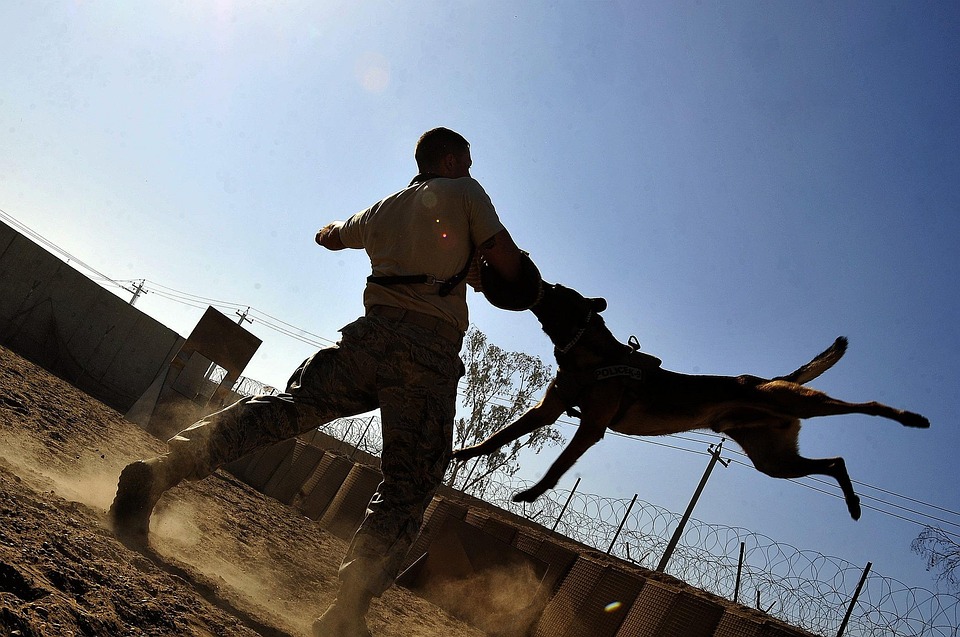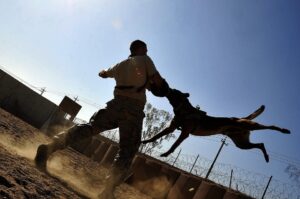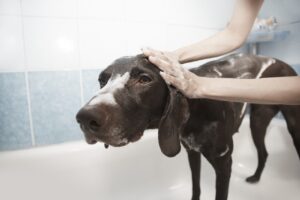
Dog biting is a significant concern for pet owners and the community alike. Understanding the root causes of dog biting is the first step in preventing such incidents effectively. Dog bites can result from various triggers, including fear, pain, dominance, territorial behavior, and even poor socialization. By identifying and addressing these underlying issues, owners can create a safer environment for both their pets and those around them.
Fear and Anxiety
Fear is one of the most common reasons why dogs bite. A dog may perceive a threat and respond with aggression to protect itself. This can be triggered by unfamiliar environments, loud noises, or sudden movements. Dogs that have experienced trauma or have not been properly socialized are more prone to fear-induced biting.
Pain or Discomfort
Dogs in pain may lash out and bite when touched or handled in a way that exacerbates their discomfort. Conditions such as arthritis, dental problems, or injuries can make a dog more irritable and prone to biting. It’s crucial for pet owners to recognize signs of pain and consult a veterinarian for appropriate treatment.
Dominance and Territorial Behavior
Some dogs bite to establish dominance or protect their territory. This behavior can be more prevalent in breeds with strong guarding instincts. It is essential for dog owners to establish themselves as the leader of the pack and ensure that their pet understands its place within the family hierarchy.
Poor Socialization
Dogs that have not been adequately socialized with other animals or people may react aggressively when confronted with unfamiliar situations. Early socialization is key to nurturing a well-adjusted dog that is comfortable in various environments and with different people.
Implementing Effective Training Techniques
Training is a fundamental aspect of preventing dog biting incidents. By employing effective training techniques, owners can teach their dogs appropriate behaviors and how to react calmly in potentially stressful situations.
Positive Reinforcement
Positive reinforcement is one of the most effective and humane training methods. By rewarding desired behaviors with treats, praise, or playtime, dogs learn to associate good behavior with positive outcomes. This approach helps in building trust and strengthening the bond between the dog and its owner.
Desensitization and Counter-Conditioning
Desensitization involves gradually exposing a dog to the situations or stimuli that trigger its fear or aggression, starting at a low intensity and slowly increasing as the dog becomes more comfortable. Counter-conditioning pairs the presence of the trigger with a positive experience, such as treats or play, to change the dog’s emotional response.
Obedience Training
Basic obedience training, such as teaching commands like “sit,” “stay,” and “leave it,” can help prevent biting incidents. A well-trained dog is more likely to respond to commands that redirect its attention away from a potentially aggressive situation.
Socialization
Socialization should begin at a young age and continue throughout a dog’s life. Exposing dogs to various people, environments, and other animals helps them become well-rounded and reduces the likelihood of fear-induced aggression. Puppy classes and dog parks are excellent opportunities for socialization.
Recognizing and Managing Aggressive Behavior
Understanding how to recognize and manage aggressive behavior in dogs is crucial for preventing biting incidents. Early intervention can prevent escalation and ensure the safety of both the dog and those around it.
Identifying Signs of Aggression
Aggression in dogs can manifest in various ways, including growling, snapping, lunging, and biting. It’s essential to recognize these warning signs early to prevent incidents. Body language, such as a stiff posture, raised hackles, and direct staring, can also indicate potential aggression.
Seeking Professional Help
If a dog exhibits aggressive behavior, consulting a professional dog trainer or a veterinary behaviorist is advisable. These experts can assess the situation and develop a tailored behavior modification plan to address the specific issues.
Using Management Tools
Management tools, such as muzzles or harnesses, can be effective in preventing bites in situations where a dog might feel threatened or overwhelmed. These tools should be used responsibly and in conjunction with a behavior modification plan.
Building a Safe Environment
Creating a safe environment is paramount in preventing dog biting incidents. This involves both physical and behavioral considerations to ensure the safety and well-being of the dog and those around it.
Supervised Interactions
Supervision is key when dogs are interacting with new people or other animals. This is especially important for children, who may not be aware of how to approach dogs safely. Teaching children to respect a dog’s space and to avoid sudden movements can prevent misunderstandings and potential bites.
Safe Spaces
Providing a safe space for a dog to retreat to when it feels threatened or overwhelmed is important. This could be a quiet room or a designated area in the house where the dog can relax and feel secure.
Avoiding High-Stress Situations
Recognizing and avoiding situations that cause stress or anxiety for the dog can prevent biting incidents. This might include crowded places, loud events, or interactions with unfamiliar dogs or people.
Conclusion: A Commitment to Safety and Well-being
Preventing dog biting incidents requires a comprehensive approach that includes understanding the root causes of aggression, implementing effective training techniques, recognizing and managing aggressive behavior, and creating a safe environment. By taking these proactive steps, dog owners can ensure the safety and well-being of their pets and those around them. Commitment to responsible dog ownership and continuous education is essential in fostering a harmonious relationship between dogs and humans.
“`
#ChatGPT assisted in the creation of this article.






